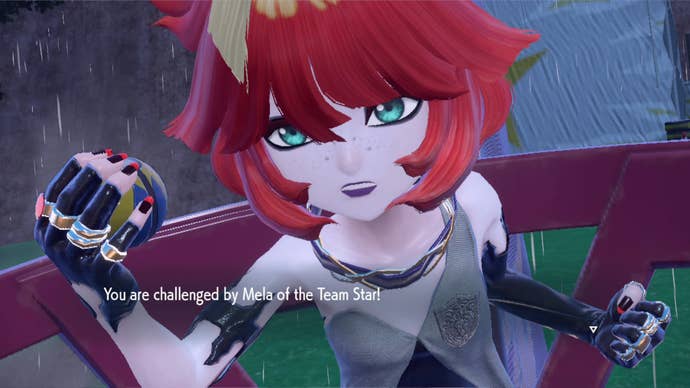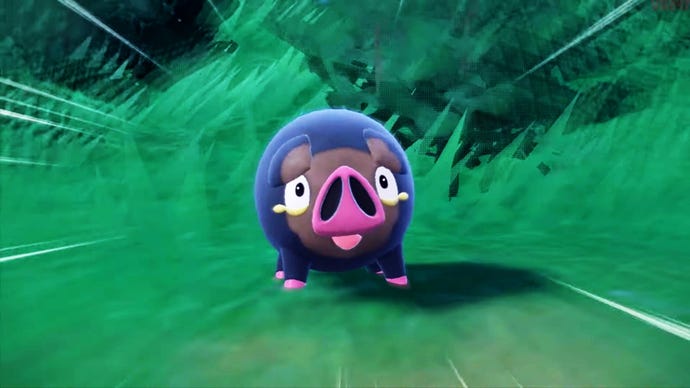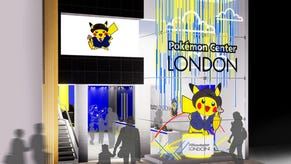Pokemon Scarlet & Violet’s performance is truly awful – but if it’s really fun, how much does it matter?
When does a game's performance start to take away from the joy of playing it? For Pokemon Scarlet & Violet, it's a hard question to answer.
Pokemon Scarlet & Violet are here, which meant that yesterday the internet was full of critics, media, and influencers delivering their verdict on what is arguably one of the most ambitious and different main-line Pokemon games of all time. The verdict was positive, but also surprisingly mixed.
As it stands right now, Pokemon Scarlet & Violet will be some of the lowest-scoring core Pokemon titles in the history of the franchise. This Metascore of 77 isn’t exactly bad, but the fact it landed lower than other equivalent Pokemon games did rather take me by surprise - as I made clear in my This took me by surprise, as I delivered a 4-star review on VG247 that basically calls it the joint-best Pokemon game of the last 20 years, sitting alongside Legends Arceus from earlier this year as a breath of fresh air that challenges the franchise status quo.
But there is an elephant (Donphan?) in the room. That, as I said in my review, is the performance. Folks, it’s bad. It’s probably the worst-performing triple-A, big-budget game I’ve ever seen. And it’s even worse when you consider that it’s coming from literally one of the biggest franchises on the planet, a brand so powerful that there is no question that more resources could be thrown at the problem.
It’s probably also made worse by the fact that earlier this year, Nintendo also released Xenoblade Chronicles 3, a truly beautiful Switch-based adventure that seems to stretch the hardware to eye-watering levels. Somehow, Pokemon doesn’t just perform worse than Xenoblade 3 – it looks worse, too. It’s the worst of both worlds. It is, honestly, fairly shocking.

But… man, how much does it matter? For me, it depends. I encountered lots of visual nasties in Pokemon Violet, which was the one of the pair I tested. NPCs in the background would routinely animate at 5 frames per second, pop-in was liberal (though, it should be noted, not as liberal as it was in Sonic Frontiers even on a PC with a $1500 graphics card and 64gb of memory), and frame drops would happen semi-regularly. The battle camera would get confused and clip inside the world – a world which, to be honest, has plenty of visual flair but also struggles in terms of detail.
But… none of it was technical. The game wasn’t crashing, my experience wasn’t massively tarnished. I was being dragged out of it from time-to-time, but crucially, this new vision of Pokemon is potent enough that I was willing to forgive a lot of this and just get on with it. There’s types of performance issues that impact the way a game plays, or renders it less playable. But in my experience with Violet, which admittedly was on a newer OLED-model Switch, I didn’t encounter any of those.
.jpg?width=690&quality=70&format=jpg&auto=webp)
The result for me was that Violet was never going to be a ‘perfect score’ game, but I wasn’t willing to disengage with a game I enjoyed so much for technical problems that amounted to an ignorable level of ugliness… but this is just me. There is no right or wrong answer here – it is deeply, deeply subjective. And I certainly don’t hold the moral high ground for being willing to ignore these problems and enjoy the game for what it is. Nor does anyone doing the opposite, choosing to skip it because of ugliness.
But it does bring a question and debate to mind: where do you draw the line? For you, personally, how bad does a good game have to be in terms of its technical execution for those problems to outstrip whatever good the game has and render it a no-go for you? I wonder what the average is among people.
Game development is always a matter of give and take, of balance – a game that really gets everything perfect is very rare. What level of balance, or lack thereof, is unacceptable? It’s probably a topic in games deserving of more discussion.


.jpg?width=291&height=164&fit=crop&quality=80&format=jpg&auto=webp)






